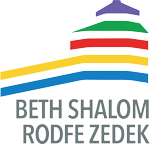Discussing the Torah portion is a traditional activity to do around the Shabbat table. This should be a fun and meaningful aspect of the evening, and you don’t have to prepare much at all. It can be as long or as short as you make it. See instructions below, and then a summary of this week's Torah portion, a focus for study, and suggested discussion questions. Shabbat Shalom!
Instructions
The idea is for you or someone around your table to facilitate a discussion on this week’s Torah portion, using this guide. It would probably be a good exercise for between dinner and dessert. I’ve created these materials so that they should work for all ages. So if you have kids at your dinner, feel free to include them in the discussion.
You don’t need to do any preparation in advance besides printing out the materials and reading them through once if you have time. I suggest printing out several copies of the materials below so that everyone can have or share one.
Go around the table and have each person read a paragraph out loud of the background summary and the Focus. It should be relaxed and informal, so questions and comments along the way are great!
Use the questions at the bottom to spark a discussion, or just stick with the questions and comments that come naturally from the group.
Parashat Va-era: Exodus 6:2-9:35
SUMMARY:
In this week’s Torah portion, Moses, as God’s messenger, is in the midst of a monumental struggle with Pharaoh. God has sent Moses to tell Pharaoh to free the Israelite people from slavery, and Pharaoh refuses to let them go. Not only does Pharaoh refuse, but he makes the Israelites’ work harsher and more bitter, forcing them to go foraging for the straw to make their bricks, but forcing them to make the same number of bricks each day.
The Israelite people complain to Moses that ever since he confronted Pharaoh, their lives have only gotten worse. Moses is frustrated at Pharaoh’s stubbornness and at the fact that the people do not have faith in him or in God. God tells Moses to reassure the people that God will free them. Then God sends wave after wave of plagues upon Egypt. This parasha includes the plagues of blood, frogs, lice, wild animals, cattle disease, boils and hail.
FOCUS:
At the end of last week’s Torah portion, Moses is so frustrated that he asks God, “O Lord, why did You bring harm upon this people? Why did You send me? Ever since I came to Pharaoh to speak in your name, he has dealt worse with this people; and still You have not delivered Your people.”
God responds by telling Moses to relay the following message from God to Israelites: “I am the LORD. I will free you from the labors of the Egyptians and deliver you from their bondage. I will redeem you with an outstretched arm and through extraordinary chastisements. And I will take you to be My people, and I will be your God. . . .I will bring you into the land which I swore to give to Abraham, Isaac, and Jacob, and I will give it to you for a possession, I the LORD.”
But, the Torah tells us, “when Moses told this to the Israelites, they would not listen to Moses, their spirits crushed by cruel bondage.”
QUESTIONS TO EXPLORE
What do you think it means to have your “spirits crushed by cruel bondage”?
In the Hebrew, the phrase translated here as “spirits crushed” is “kotzer ruach,” or “shortness of spirit/breath.” What do you think it means to have “shortness of spirit” or “shortness of breath”?
Why do you think it is so hard for the Israelites to believe that God and Moses are going to free them? What is it about slavery that makes this so difficult for them to believe? Why don’t they just jump at the chance?
How do you think Moses or God might be able to give the Israelites some hope that they really might get free?
Where does hope come from?
Have you ever had an experience of being “kotzer ruach”, or can you think of people in today’s world who might be experiencing that?
How do we find hope when we face challenges and obstacles?

No comments:
Post a Comment